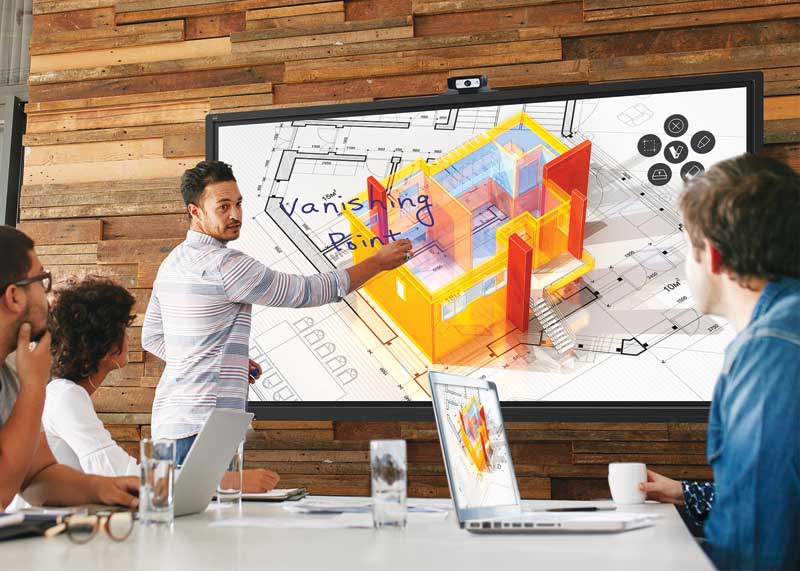Higher-speed connectivity
Ultra-high-speed connectivity, both physical and wireless, has become a critically important component for flat-panel displays, particularly when interactive. And each year, as content becomes higher-resolution (as mentioned earlier) and more complex, the need increases.
While wired connectivity will continue to be the predominant option, a growing interest in 5G wireless connectivity is opening additional opportunities for streaming content to screens. The next generation of digital displays will accommodate multiple inputs for out-of-the-box functionality, including physical Video Graphics Array (VGA) and HD Multimedia Interface (HDMI) ports and wireless antennas. Built-in casting capabilities will also allow users to stream content from any device without requiring additional hardware.
Enhanced interactivity
There has been exponential growth for touch screens in recent years. While many of today’s displays can handle basic interactivity, however, many users’ needs have become more advanced.
The number of touch points supported on a single panel, for example, has grown with the advent of large-scale video walls. It is now possible for 20 touch points on a display to allow multiple users to interact with content simultaneously.
The next phase of development will bring even more touch points and greater accuracy on larger-format displays, based on enhanced technologies originally developed for smartphones. These improvements will open the doors for new promotional and cross-marketing applications everywhere from movie theatres and hotel lobbies to automotive dealerships and restaurants.
Innovative projections
As the installation of public large-format displays grows, the digital projector market has shown new signs of life and made a comeback. In fact, some of the most interesting and innovative digital signage work seen these days has involved projection mapping of high-resolution images onto existing surfaces. Digital projectors are increasingly being used to display content at amusement parks and sports venues, among other large-scale environments, where the size of the ‘screen’ need not be limited.

The number of touch points supported on a panel has grown with the advent of large-scale video walls.
Following a period during which sales of digital projectors have remained relatively constant, 2018 is expected to see an upward surge, as the technology has improved and price points have become more attractive. At the 2017 InfoComm audiovisual (AV) industry exposition, there were more new projector models showcased than in the previous three years combined. The show’s organizers reported some of the biggest trends included 4K UHD, laser and ultra-short-throw projectors.
Zion Market Research estimates the global market for standard-, short- and ultra-short-throw projectors will see a CAGR topping 21.5 per cent through 2022, thanks to widespread adoption for corporate, government, educational and other applications.
A medium for everyone
Overall, the prospects for the digital signage industry continue to be very bright, as the technology is making its way into every corner of people’s daily lives. Not only have technological advances made systems more versatile and affordable, but greater ease of use and more built-in features have made them more accessible to everyone from sign shops to marketing agencies to AV integrators.
Whether digital signage involves delivering static content on a poster or menu board, streaming live video or providing an interactive experience for shoppers, hotel guests or sports fans, all indications suggest the industry will continue to expand its scope in the months to come.
Deidre Deacon is general manager (GM) of ViewSonic Canada, which provides digital displays, including touch-based interactive screens, to commercial businesses and educational institutions. For more information, visit www.viewsonic.com.






